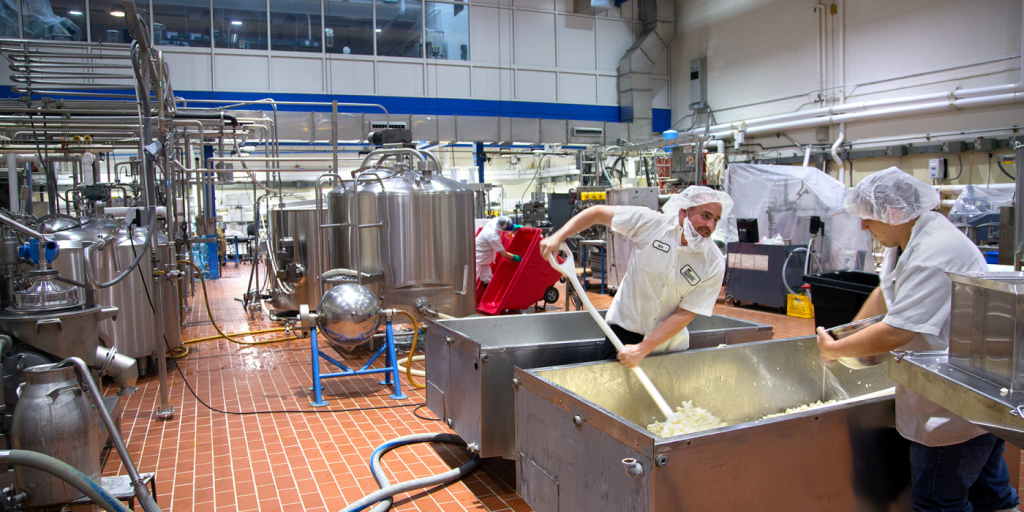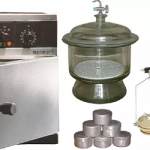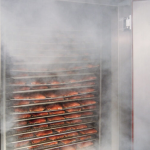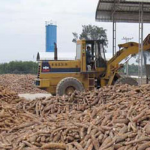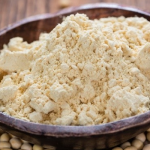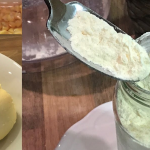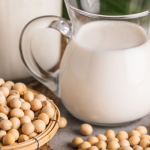Introduction
Food processing is basically the transformation of raw ingredients, by physical or chemical means into food, or of food into other forms. Food processing combines raw food ingredients to produce marketable food products that can be easily prepared and served by the consumer. Food processing typically involves activities such as mincing and macerating, liquefaction, emulsification, and cooking (such as boiling, broiling, frying, or grilling); pickling, pasteurization, and many other kinds of preservation; and canning or other packaging. (Primary-processing such as dicing or slicing, freezing or drying when leading to secondary products are also included).
The food processing laboratory is where practical skills in food preservation and processing are acquired, and also the food processing laboratory helps in development of better skills in planning and conducting experiments, collecting experiments data, analyzing and interpreting results.
Objective of the Experiment
This experiment is carried out to introduce and make students familiar with most food processing machines and to know their various functions.
Common Machines in the Food Processing Laboratory and Their Uses
- Sieving machine: This machine is used for sieving.
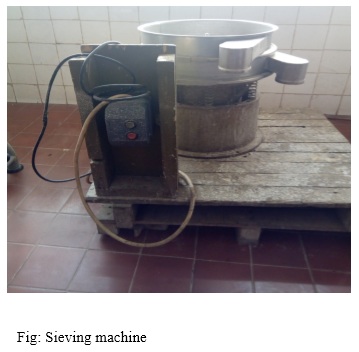
- Bread slicer:
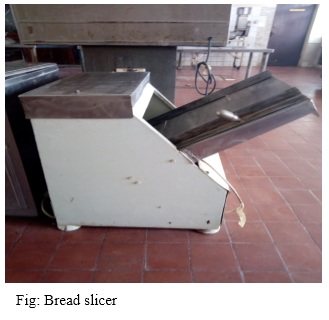
- Weighing Machine: This machine is used for weighing materials in the laboratory.
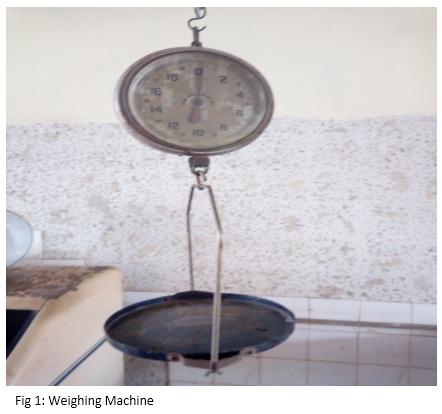
- Water Bath: A water bath consists of a container containing water, which is heated by electric heating elements. The required water temperature is obtained by increasing or decreasing the rate of heating by rotating the thermostat by trial and error. Water bath can also be used to concentrate food products e.g. Tomato paste
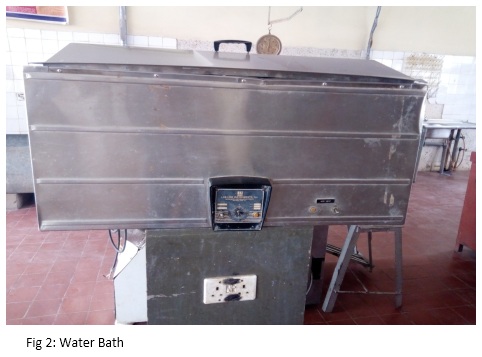
- Palm-Kennel Extruder
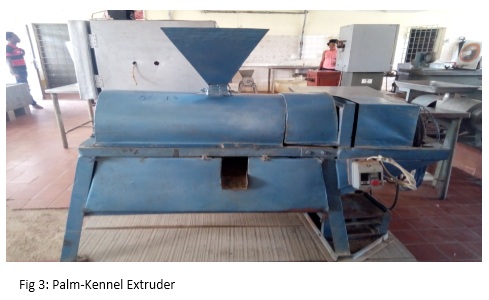
- Autoclave: The is used not only to sterilize liquid substances such as prepared media and saline (diluents) solutions, but also to sterilize glassware’s, when required. The materials to be sterilized are covered with craft paper and arranged on an aluminium or wooden frame kept on the bottom of the autoclave. The autoclave is closed perfectly airtight diagonally only keeping the steam release valve open.
Then, it is heated over flame or by the in-built heating element. Air inside the autoclave should be allowed to escape completely through this valve. When water vapour is seen to escape through the valve, it is closed. Temperature and pressure inside goes on increasing. The pressure increase is observed on the pressure dial. Usually sterilization is done at 121 °C for 15 minutes. The required time is considered from the point, when the required temperature-pressure is attained. Once required temperature-pressure is attained, it is maintained by controlling the heating source. After the specified time (15 minutes), heating is discontinued and steam release valve slightly opened. If fully opened immediately, due to sudden fall in pressure, liquids may spill out from the containers. Gradually, the steam release is opened more and more, so as to allow all steam to escape. The autoclave is opened only after the pressure drops back to normal atmospheric pressure. The autoclave should never be opened, when there is still pressure inside. The hot sterilized materials are removed by holding them with a piece of clean cloth or asbestos- coated hand gloves.
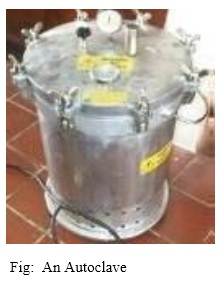
- Incubator: Profuse growth of microbes is obtained in the laboratory by growing them at suitable temperatures. This is done by inoculating the desired microbe into a suitable culture medium and then incubating it at the temperature optimum for its growth. Incubation is done in an incubator which maintains a constant temperature specifically suitable for the growth of a specific microbe. As most of the microbes pathogenic to man grow profusely at body temperature of normal human being (i.e. 37°C), the usual temperature of incubation is 37.

- Electron Microscope: A microscope is an instrument used to see objects that are too small to be seen by the naked eye. Microscopic means invisible to the eye unless aided by a microscope. The microscope plays a very important role in laboratory for the tissues and organisms which are too small to be seen clearly with the naked eye. With the aid of the microscope, however, these objects may be magnified so that an entirely new world of life is opened to our vision. Such an instrument, is of necessity, very delicate and built to high precision, hence it must be handled and used with care and understanding in order to obtain the desired results and to avoid serious damage to the microscope. Different types of microscopes are used for visual observation of morphology, motility, staining and fluorescent reactions of bacteria.

- Fruit pulping machine: Fruit pulping machine is suitable for separating residues and pulps from pome fruits and various berries. Fruit pulper with motor is used to extract pulp from fruits, vegetables and other pulpy items. It is commonly used in canning industry for pepper de-skinning and washing of spices.
- Burr Milling Machine: It is a mill used to grind hard, small food products between two revolving abrasive surfaces separated by a distance usually set by the processor. When the two surfaces are set far apart, the resulting ground material is coarser together, the resulting ground material is finer and smaller. Most times, the device makes use of a revolving screw that propels the food through. It may be powered electrically or manually.
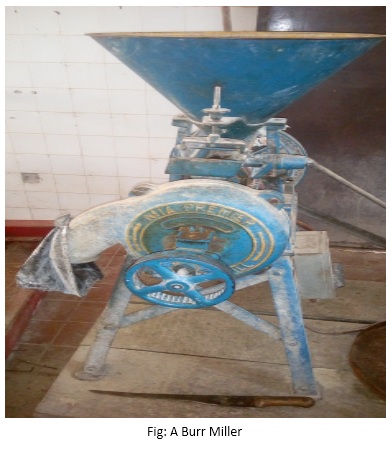
- Homogenizer: This machine is used for homogenization, that is, to mix liquid to attain homogeneity, having uniform properties.
- Distillation Column: It is an apparatus widely used for countercurrent contacting of vapour and liquid to effect separations by distillations or absorption. In general, the apparatus consists of a cylindrical vessel with internals designed to obtain multiple contacting of ascending vapor and descending liquid, together with means for introducing or generating liquid at the top and vapour at the bottom.
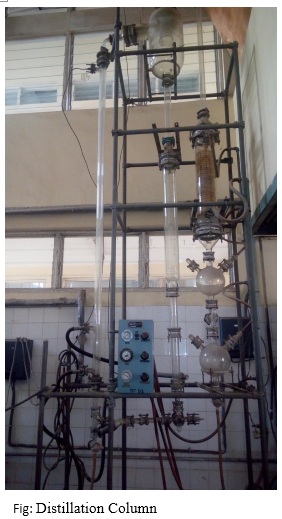
- Dicing machine: This is used for dicing yam, plantain, into different sizes.
- Stephan machine: for beating cassava in order to extract starch.
- Canning machine: This machine is to seal can products.
- The dehulling machine: It is used in the removal of hulls or grains and cereals.
- The cabinet dryer: the cabinet dryer is an electrical machine used for drying.
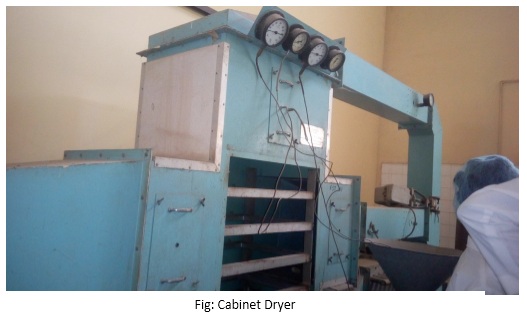
- Fluidized bed dryer: it helps in drying substances instantly
- The churning machine: the churning machine is used for churning of two or more products e.g cassava flour, yam flour.
- The drum dryer: the drum dryer is also a machine used to achieve the drying process.
- Plantain roaster: For roasting plantain.

